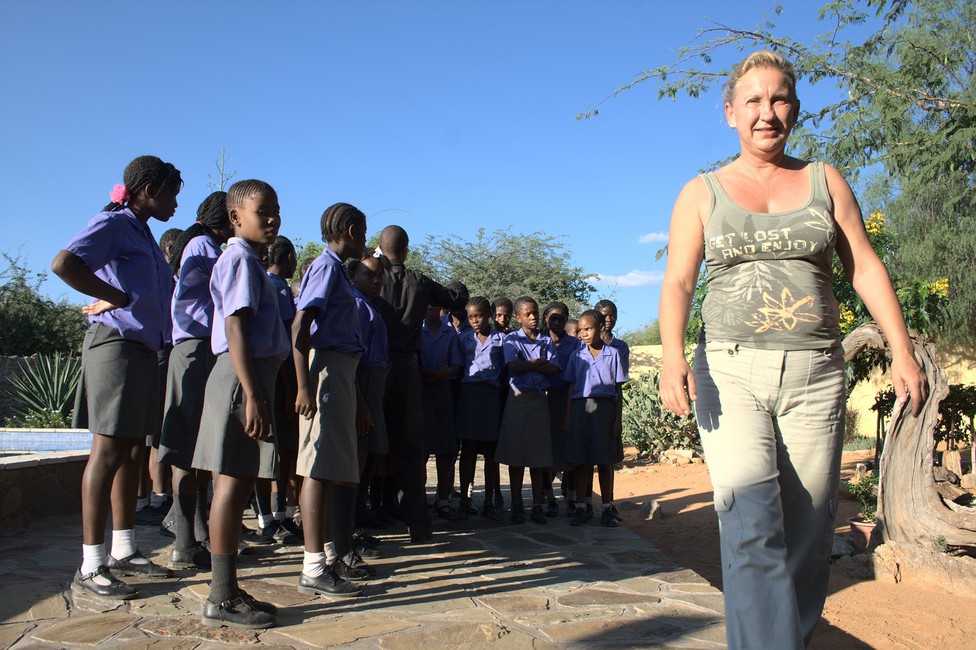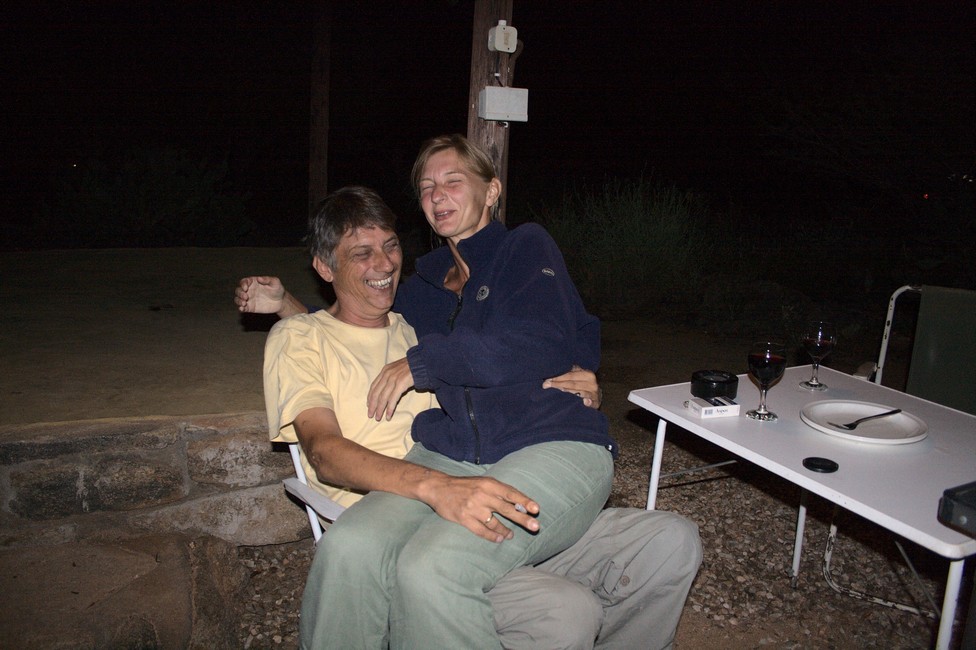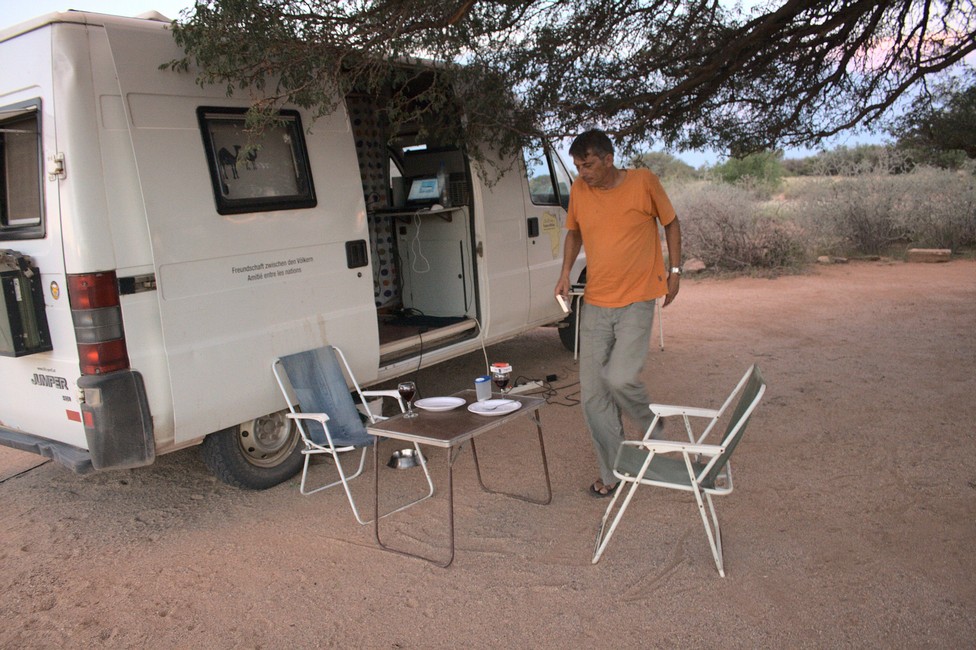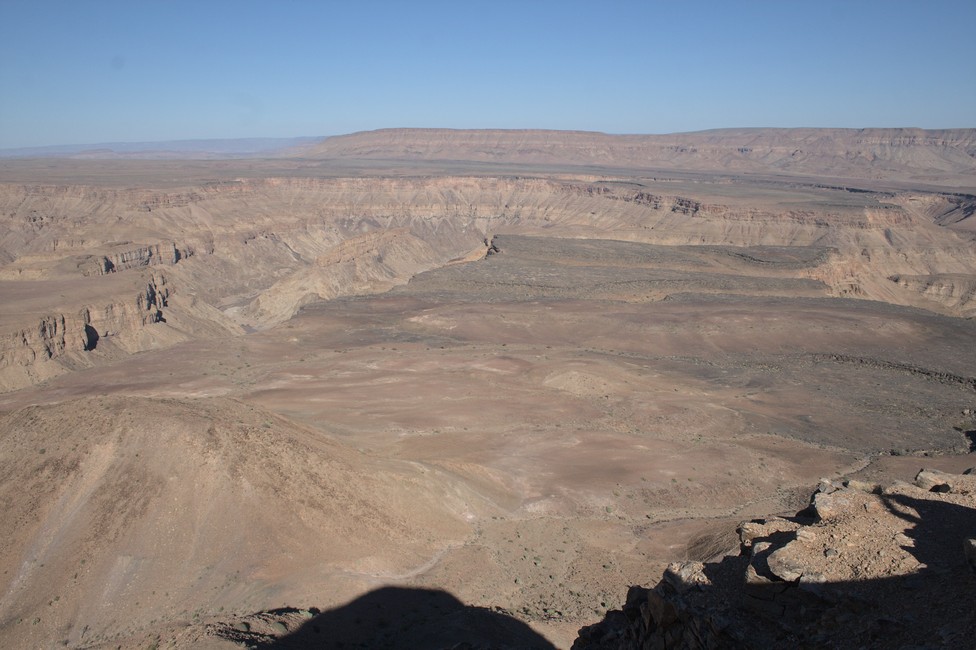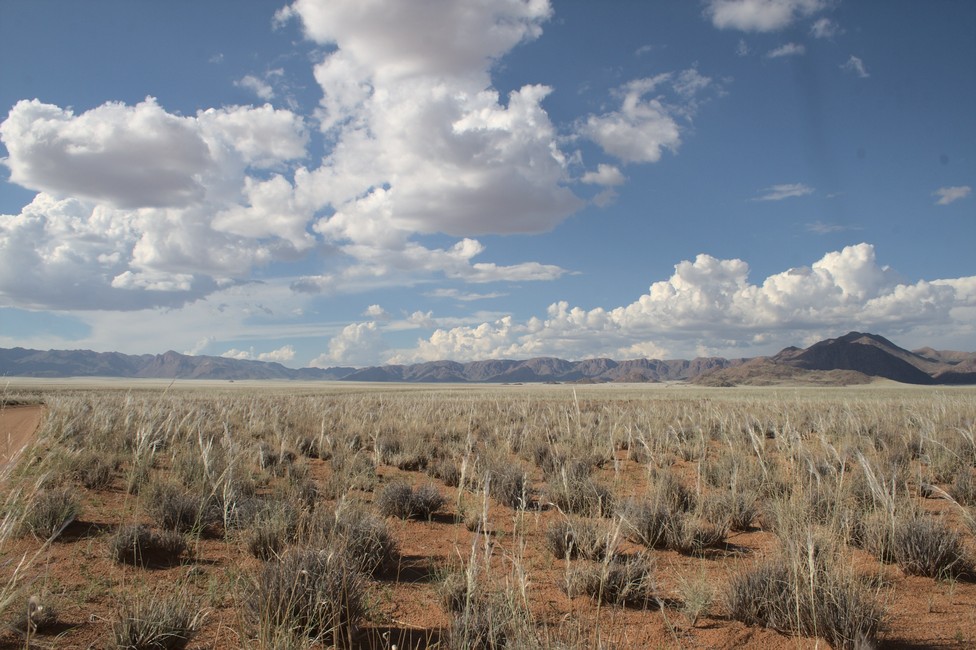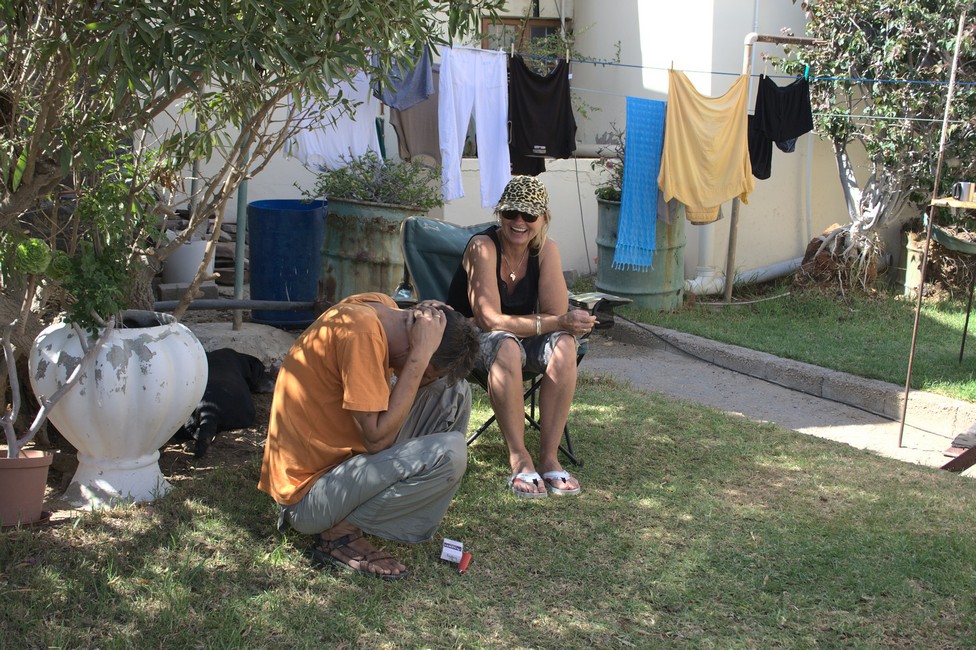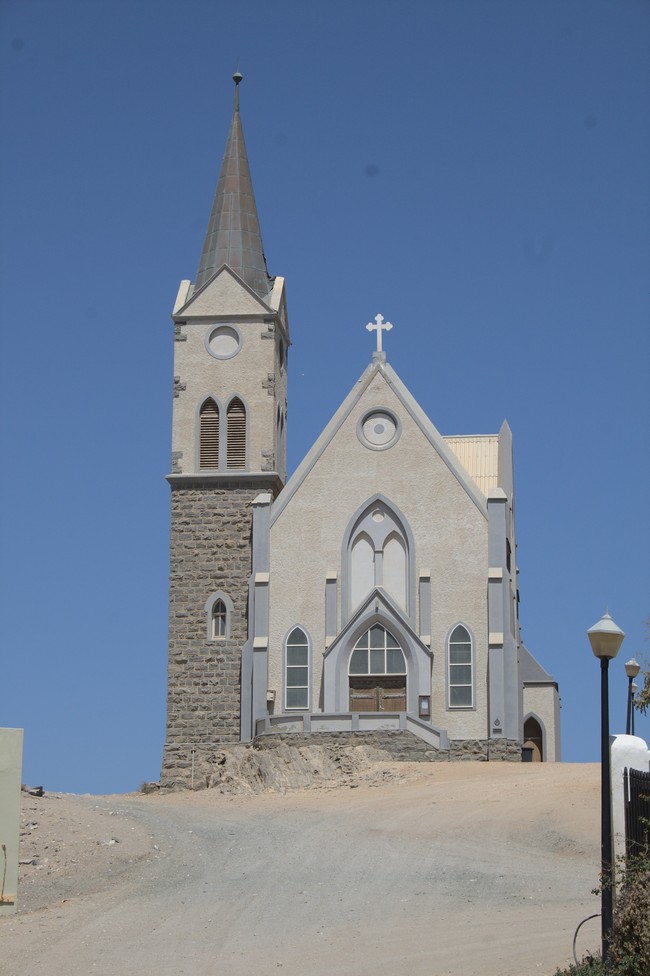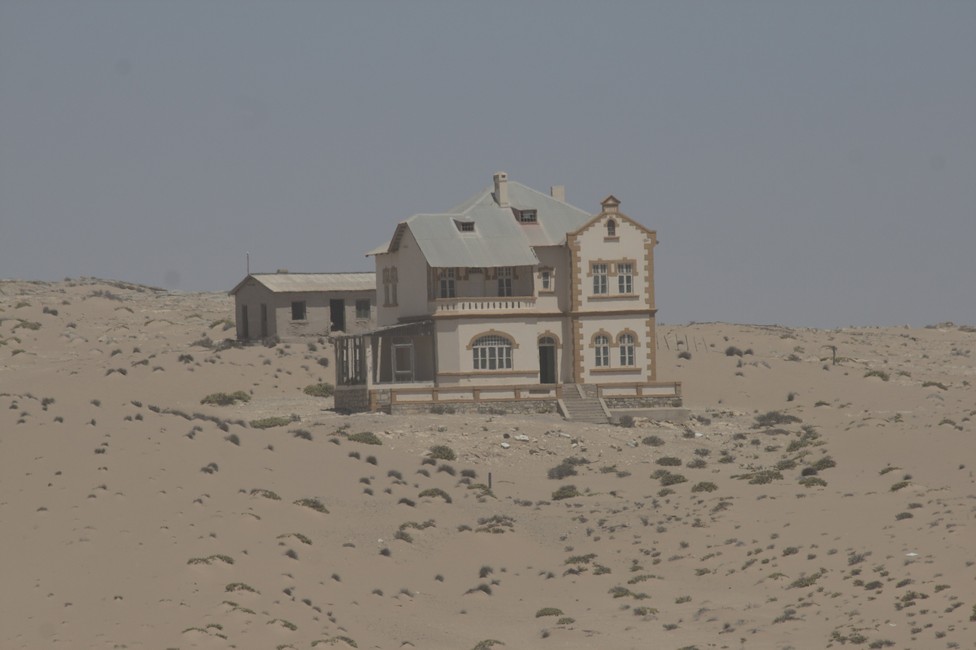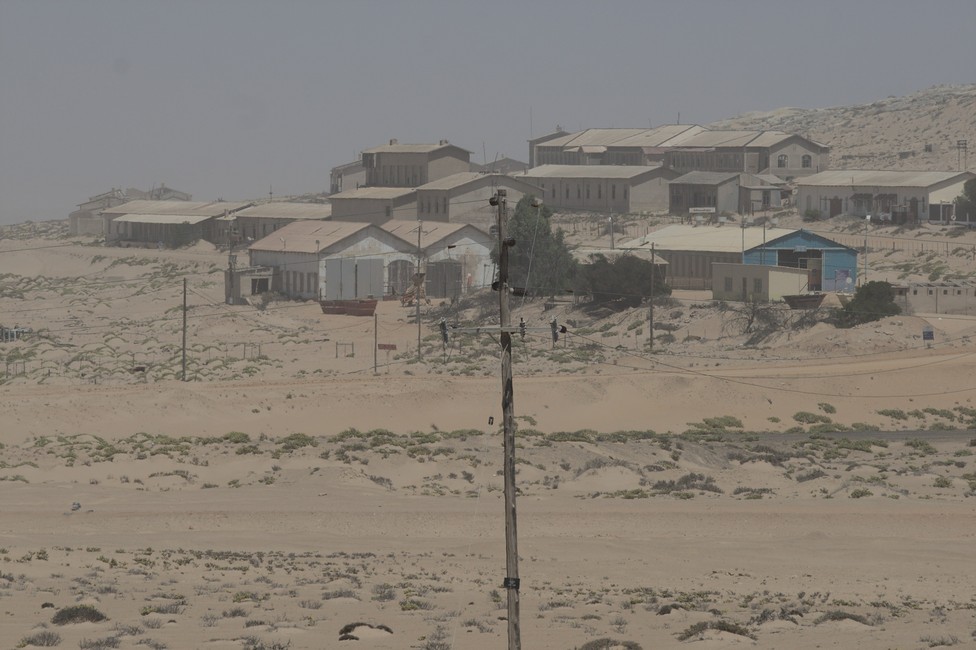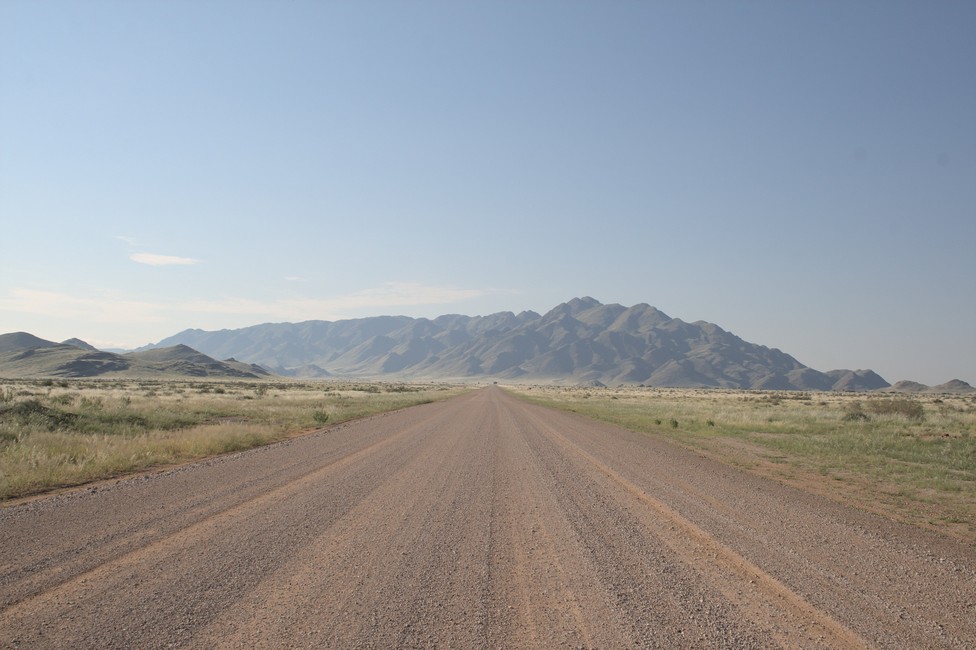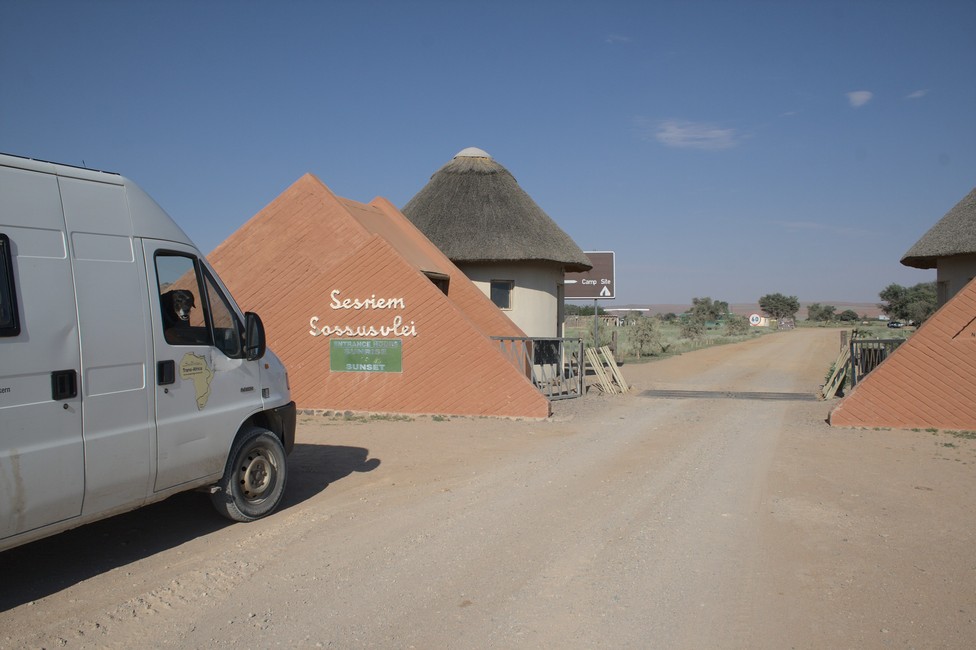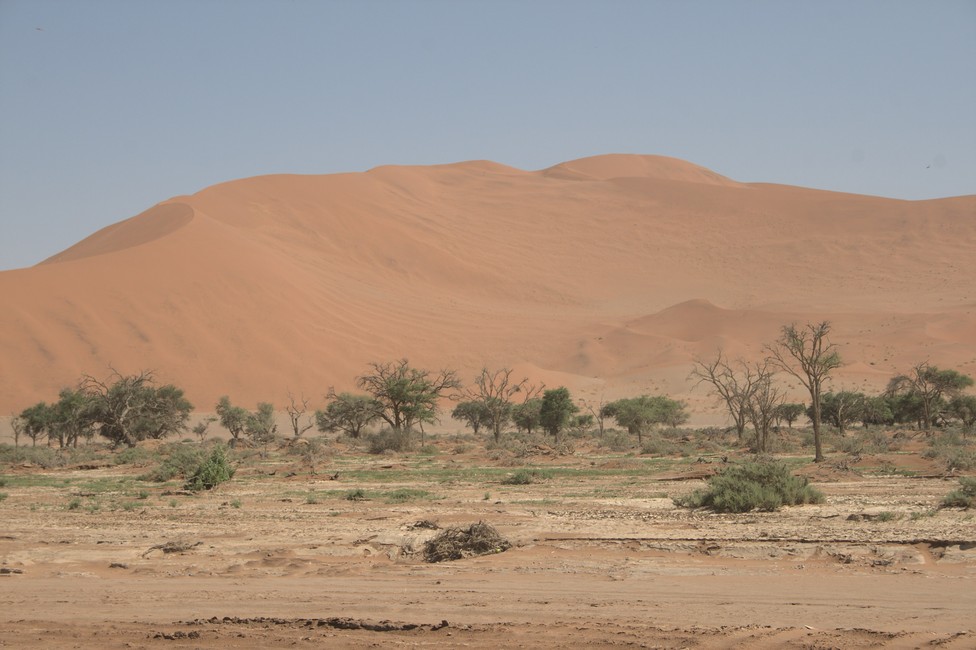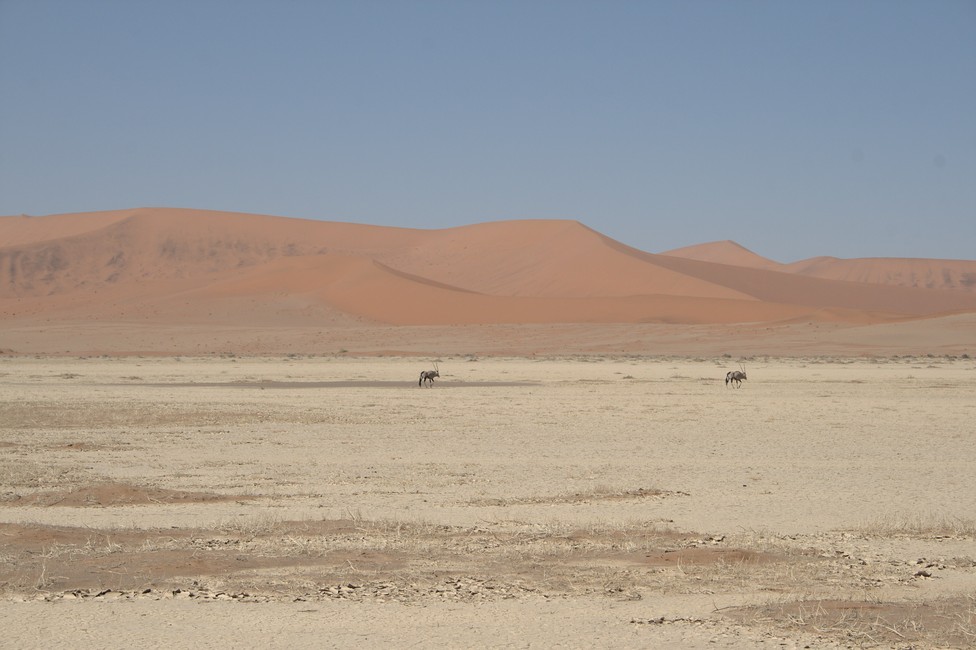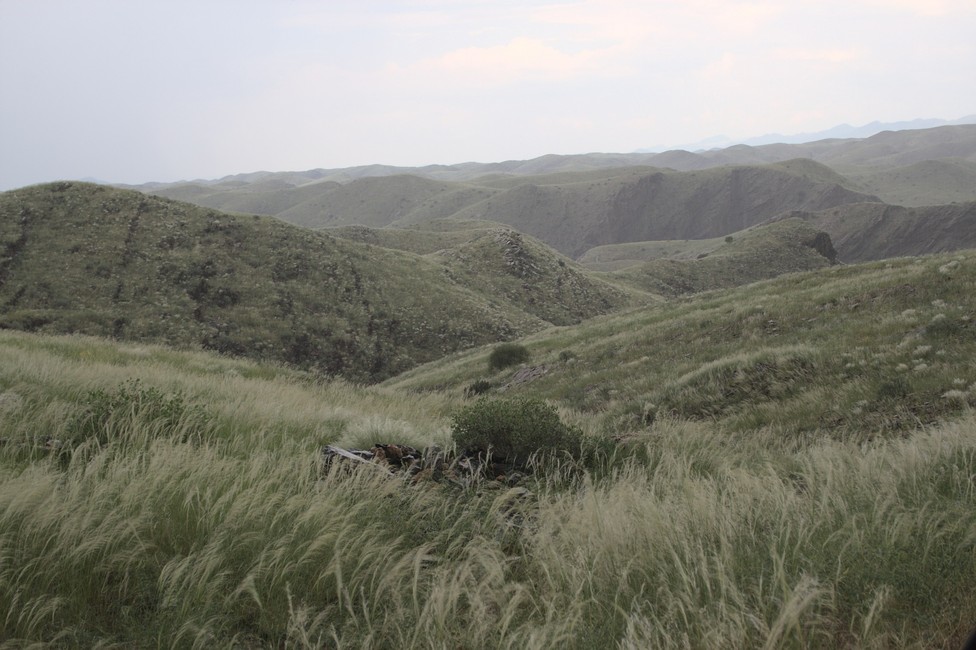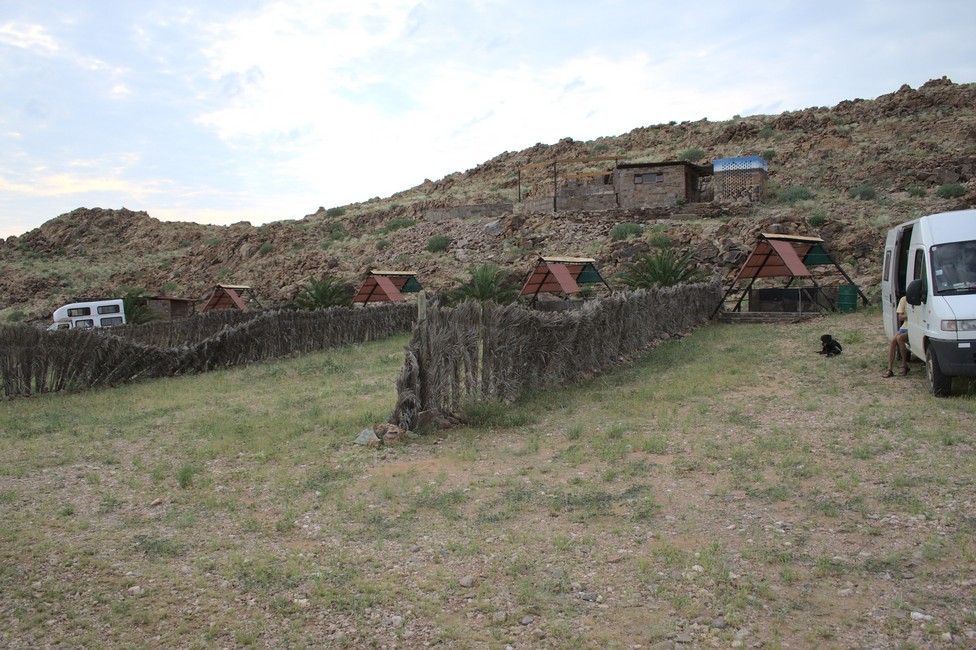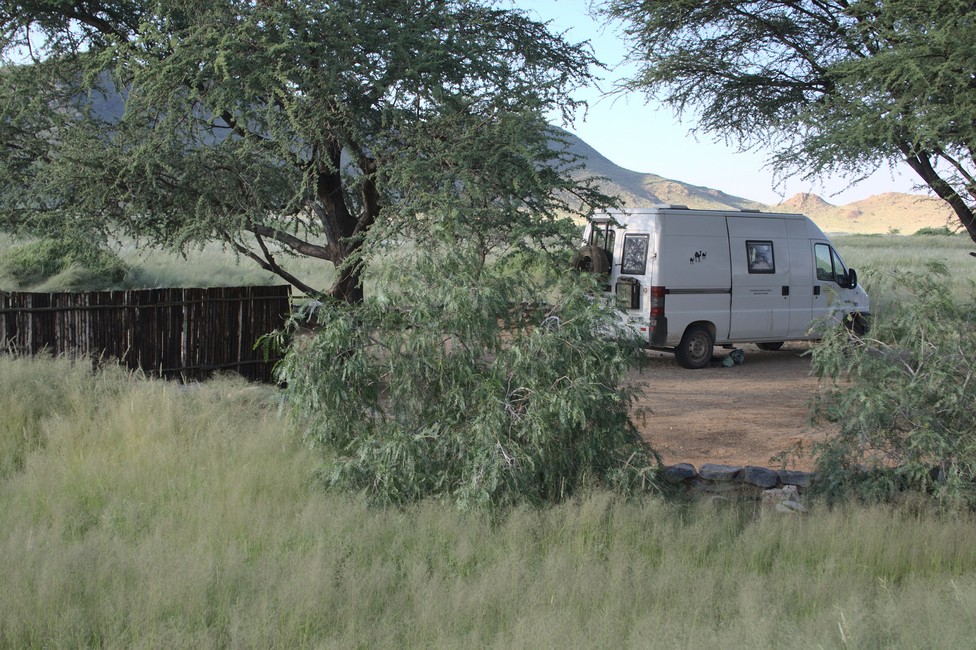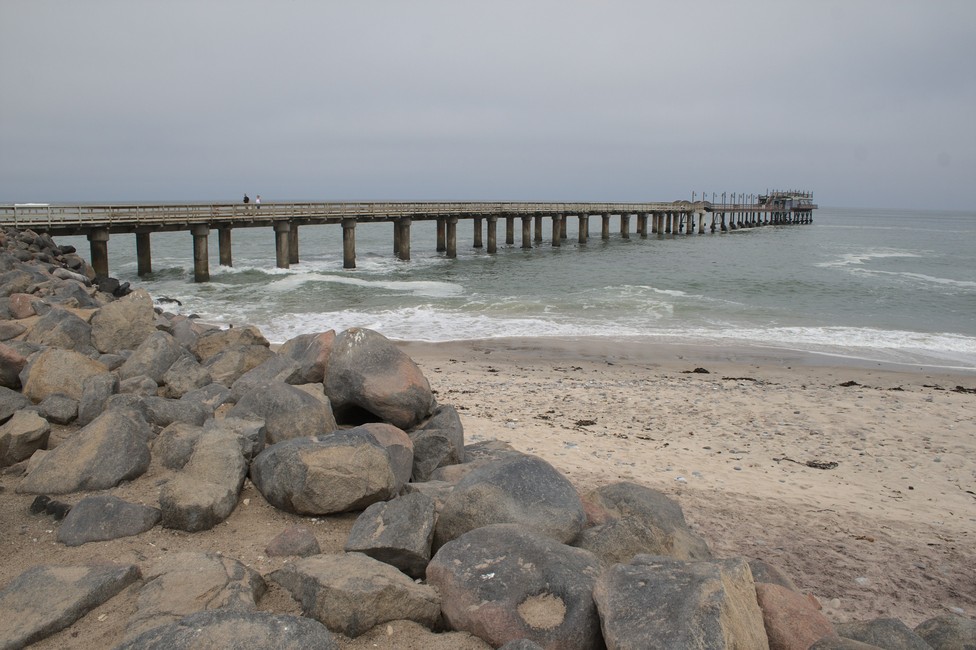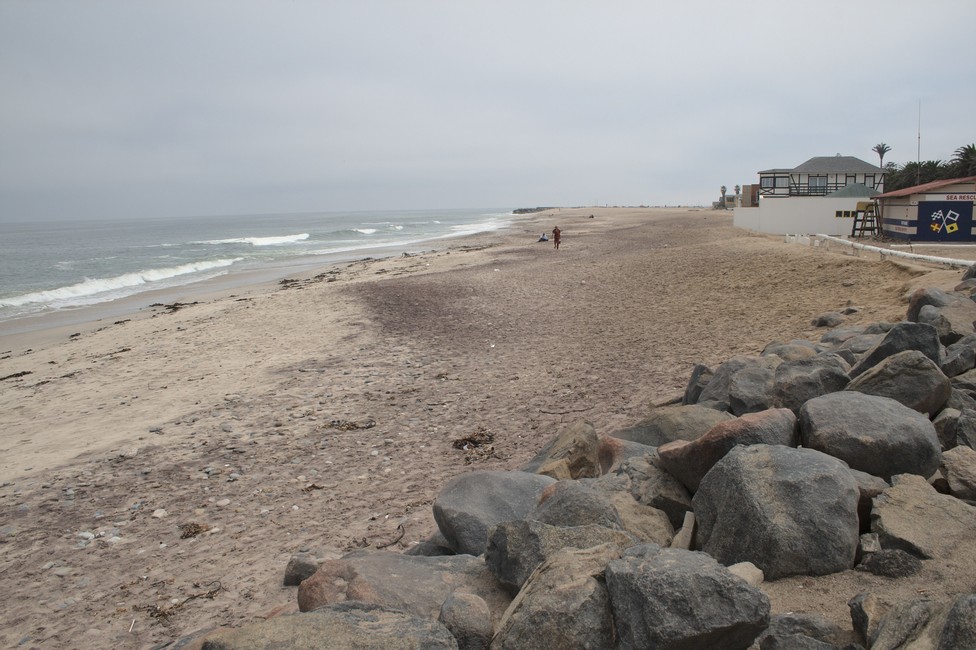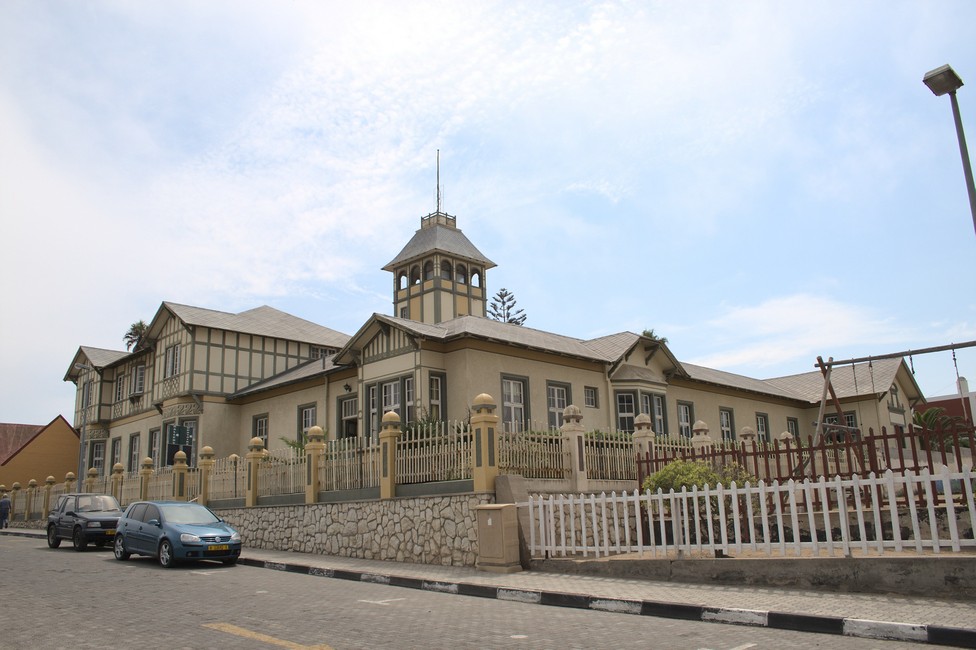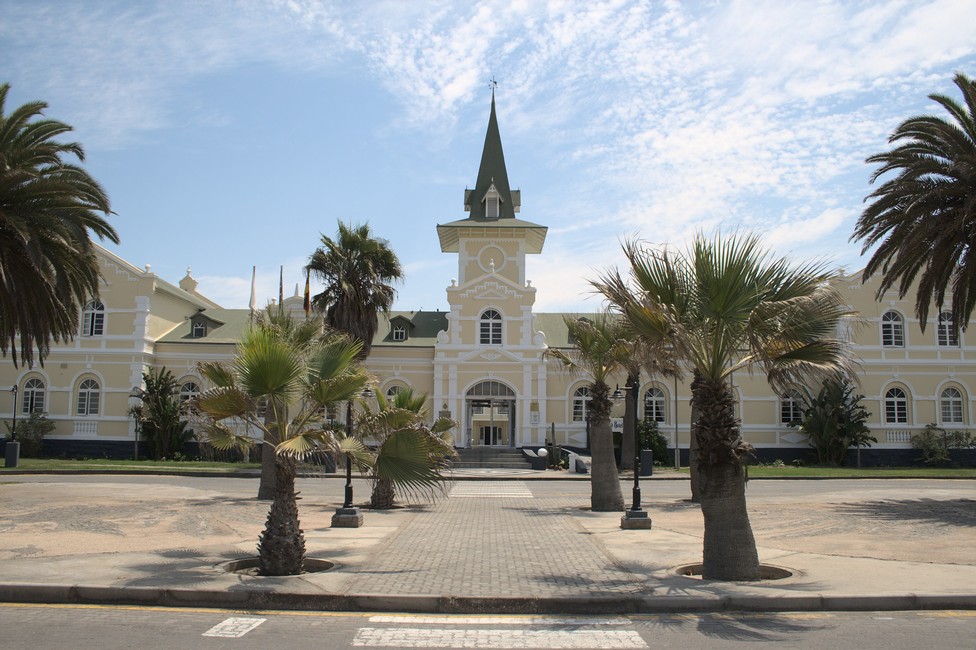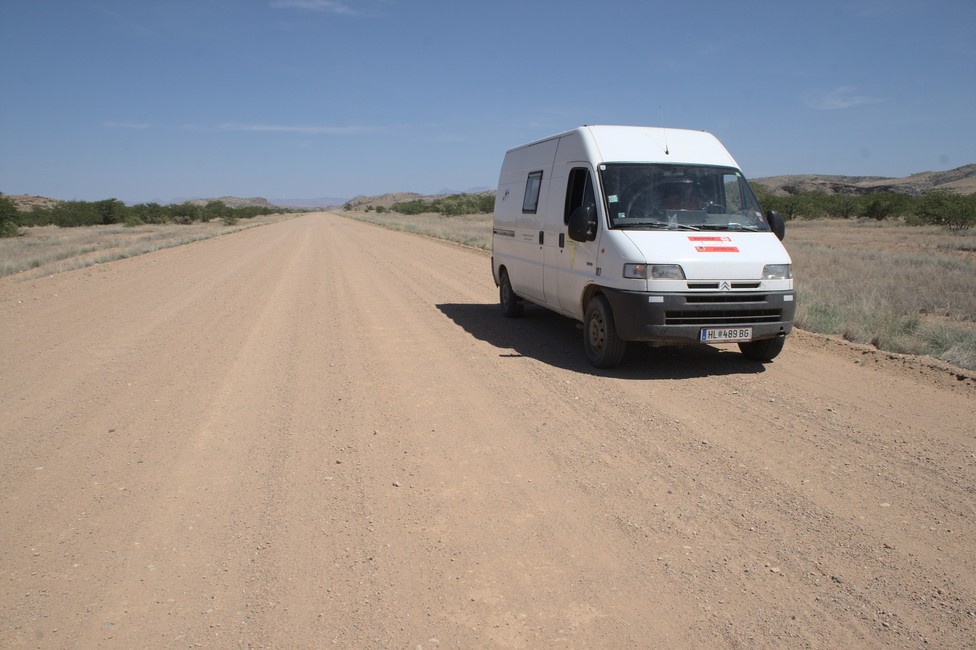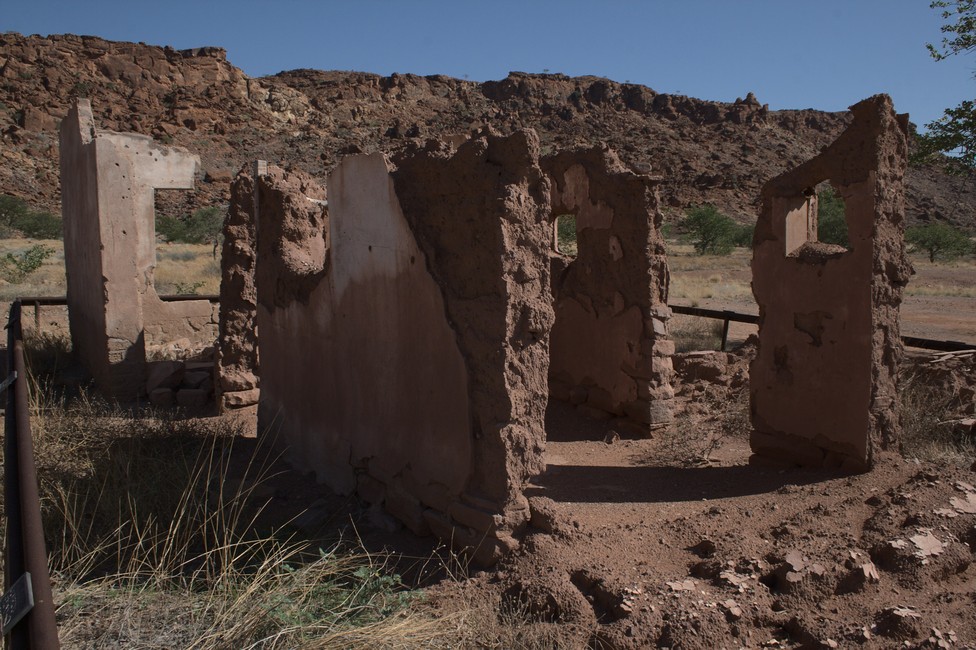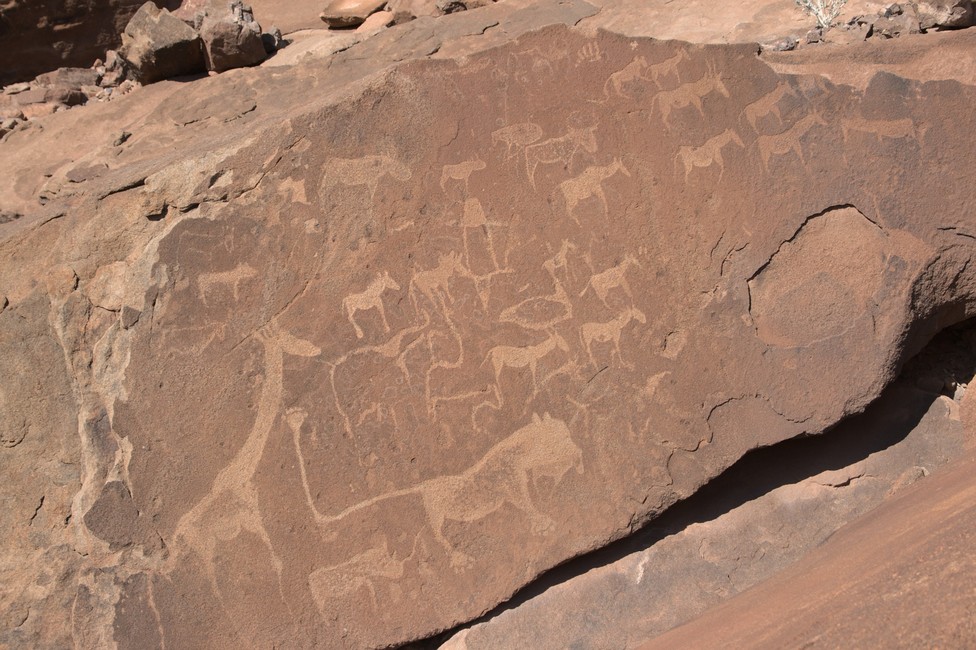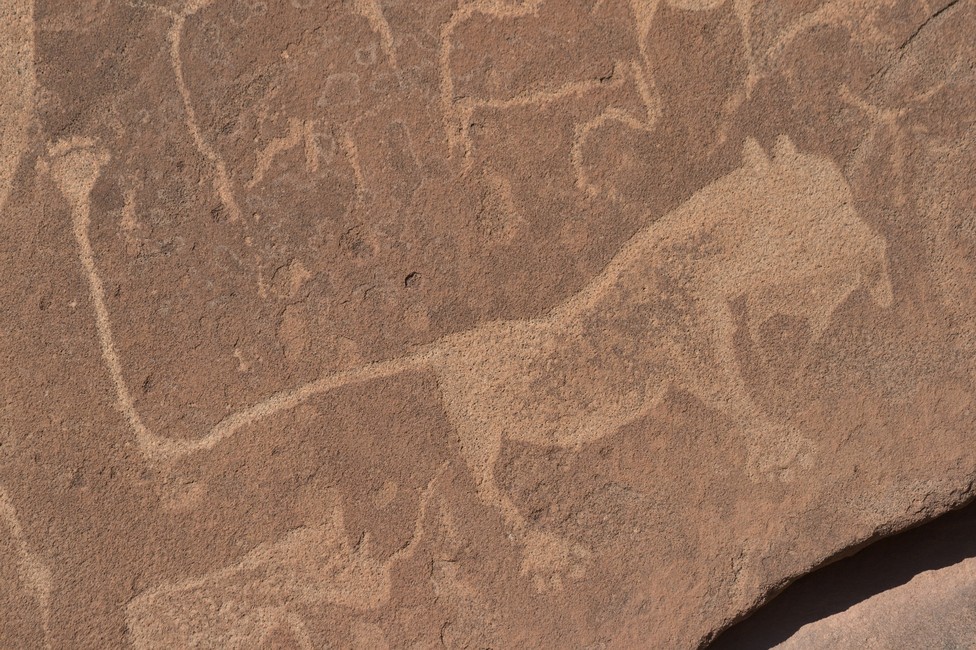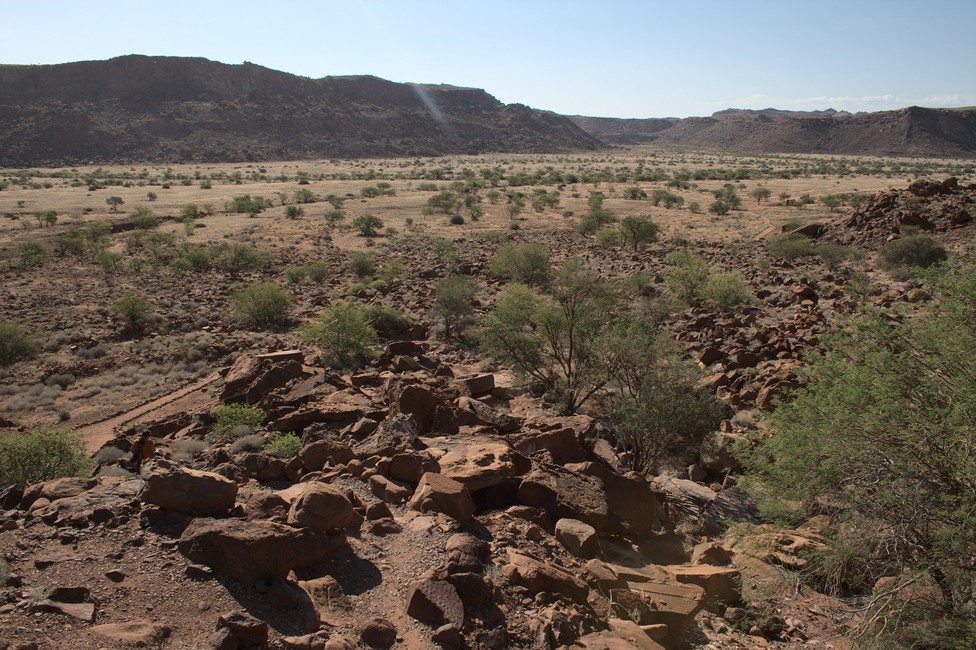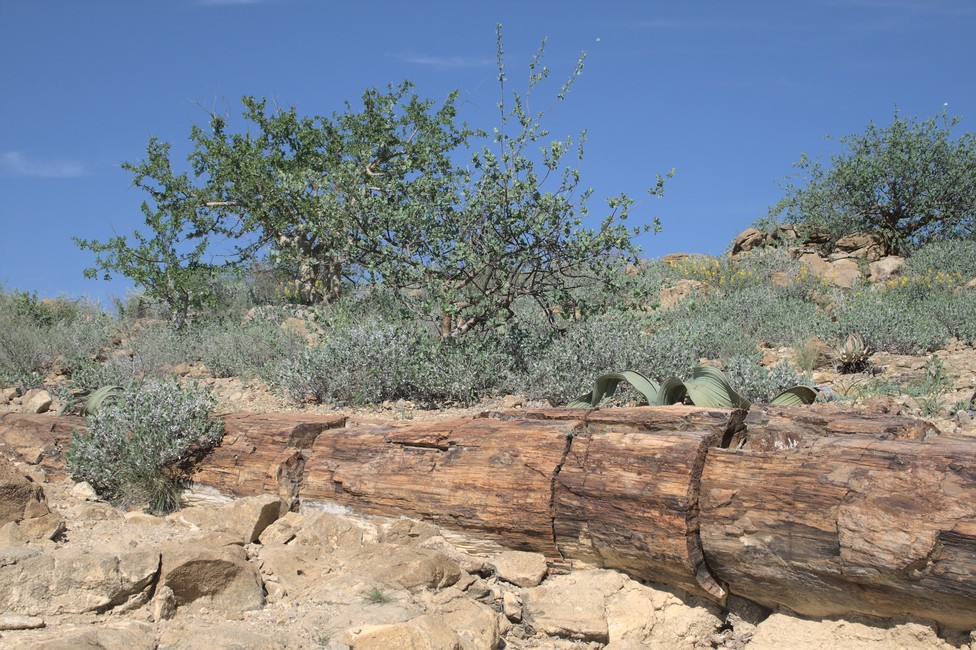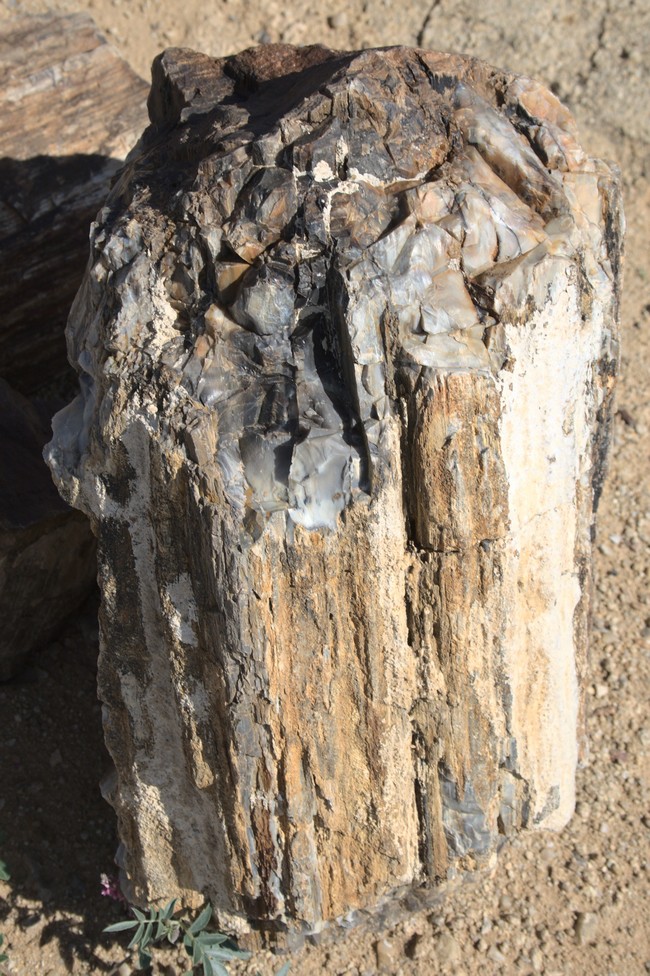We drove back to Namibia and entered via Dobe to finally arrive again to Oppi Koppi, because our camper van was still there.
Destruction of the camper van by customs
The rancher Robi wanted to have the car but was supposed to organise the papers, but soon we learned that he could not get the papers done and the only option seemed to destroy the van in Namibia. Lars a German guy who operates a Unimog garage in Kamanjab, organised the customs officer from Otiwarongo.
Before we took out the furniture and all the stuff which we needed to build up the Land Rover and which we could still use.
The three officers came and instead of cutting the vehicle in half which would have been useful for Lars so he at least could have utilised the car, the officers demanded that the bulldozer has to damage the vehicle heavily and after that it should have been burned.
Alexandra was very sad as the was our wedding vehicle and travel companion for years. At least Lars could safe the seats, tires and some spares and the bulldozer hit the car heavily and finally it was burned and the some could be seen far into the landscape.
We had to pay the officers 1200 Nam Dollar and they should send us the papers of destruction. As the vehicle was traveling on a Carnet the passage, which was issued by ADAC, we had to get our deposit back. When we got the papers we sent a copy to ADAC in Germany with DHL to speed up the process. But after we had sent it they wanted also the expired Carnet, so we had to go again to Windhoek to DHL to send the papers to Germany. After 5 weeks we finally got the deposit back.
Our dog Tara got a new infection with tick fever, so we had to get to the Vet again to pick up her medicine.
As our distributor of our videos stopped operating and owed us around 50.000 Euro, we slowly ran out of money. But we had to continue to Botswana as our Namibia Visa expired, so Vital told us we could pay for the expenses from Botswana.
Building the Land Rover for the next years to come
The time went buy and with Vital we welded a roof rack for the Land Rover and even managed to coat it with zinc. The furniture from the van we fitted in the Land Rover and made also new parts from wood to make it our home for the next years to come.

Rick and Anne were living on the Lodge as well, as the campsite belonged to them until they sold it to Vital and Marianne but kept the right to build a house on the compound which they did and lived there already for a couple of years. They were traveler like us, traveling all over the world but were now in their late 70ies and no longer planed to do longer trips, so they gave us their awning as a present, which we fixed to the Land Rovers roof rack.
We were lucky as we could put all our stuff from the camper van in a safe shelter at Rick and Vital and could use Vital’ s tools and garage to make everything fitted into the small room the Land Rover provided compared to the van. Some thing we gave as a present, because simply we had no space left.
Some of the evenings we spent with Rick and Anne and were talking about their log journeys and how they came here.
Himba People – a visit of a Himba village
There was another couple next to Kamanjab that operated a farm – Andrea and Volker, German speaking Namibians. As the Internet was broken at Oppi Koppi they invited us to their place to use their internet, as we had to find a new job as our German distributor did not pay any more our videos and owed us quite a lot of money, so we basically had to find a source of income to continue our trip. So we decided to try to get digital nomads as it nowadays is called. So things had to be built up, where we needed internet access of course.
In the evenings we sat together with Andrea and Volker and had a lot of fun and drinks. Andrea was an artist as well and did some painting on the Land Rover. Although our distributor crashed I wanted to finish the documentary which consisted of 13 Episodes. So on the farm of Andrea there was living a tribe of Himba people which we should document and make a little video clip for Andreas Website.
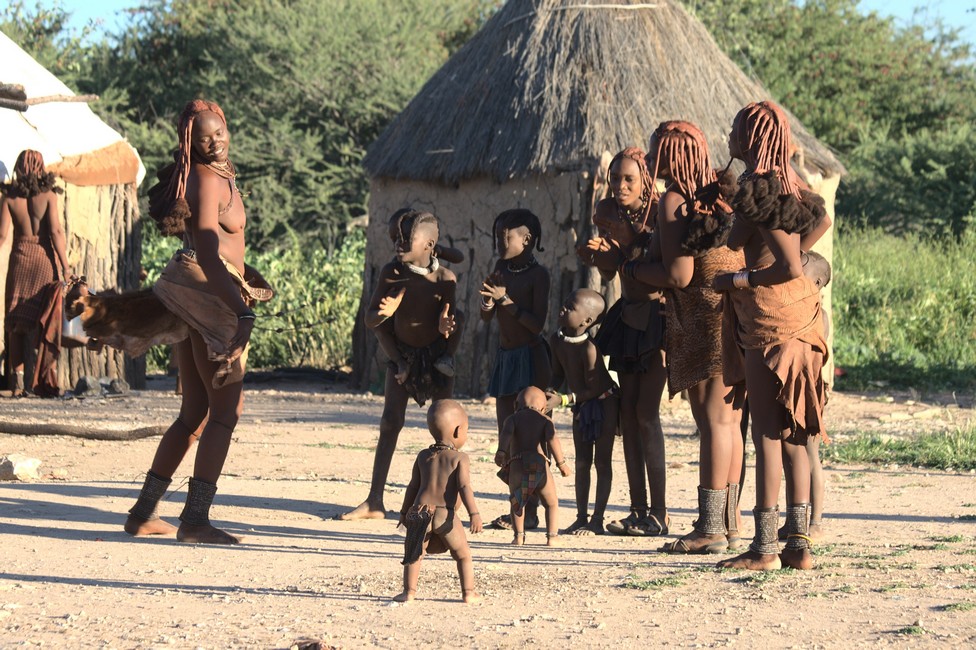
Next morning we started to visit the Himba village with Andrea and we could make our videos and photos, which Alexandra was allowed to upload to image agencies in the states to earn money with the images.
We are impressed that the Himba people could maintain their original lifestyle. They are a pastoral people, who keep cattle and goats. They live in mud huts and are self catering. With the production of souvenirs, especially the making of necklaces, they earn cash to use for the purchase of goods from the grocery store, because barter is not available in supermarkets.
In the morning, the women meet and hold a palaver. Thereafter is cooked. On the open fire they prepare Millipab, the traditional corn porridge. This is the main food of the Himba. A striking feature of the women is their hairstyle. The hair is smeared with butter and Oka, which allows interesting hairstyle creations. The reddish color of the body and luster of the skin comes from the butter fat with which they rub the body and the reddish color comes from iron oxide ground stones. It is only the beauty and has nothing to do with insect repellent, as suggested in many cases.
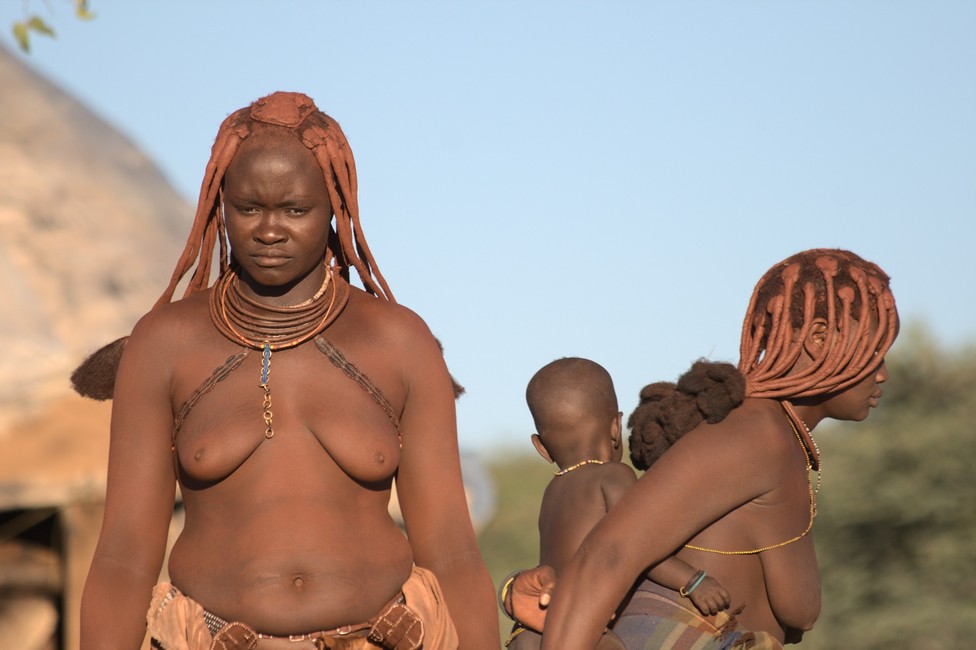
Fetching water often is the task of young people or children. The water is often brought from distant places, dangerous in the bush. After sleeping over noon, life comes back to the village.
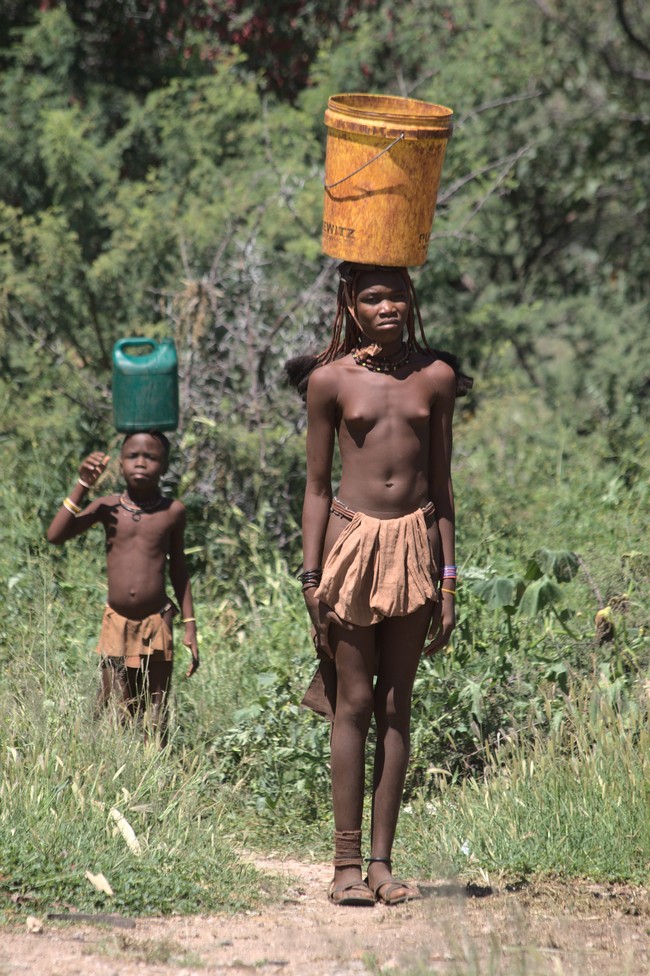
They meet again to gossip, exchange information and discuss problems. he afternoon is also the singing, dancing and games. Hopefully the Himba people can still preserve their life style over the next centuries.
Unrest among the chicken. A chicken is captured and accurately examined. It might have parasites. The children gather curiously around the chicken. Chicken are part of the diet of the Himba people, not only as an egg supplier. This time the chicken was lucky, it does not land in the soup pot.
In the evening we sat again together with Andrea and Volker and had some drinks. But we still had to drive back to Kamanjab in the night. It had rained a lot and little pools were forming the gravel road back to Kamanjab.
First Pool, second pool the water and mud came into the car next to the gear levers and the stalled. After lots of trials the engine started again but with terrible noise as the exhaust manifold has broken. We got stuck still several times but could free ourselves until we finally reached the campsite of Oppi Koppi late in the evening.


